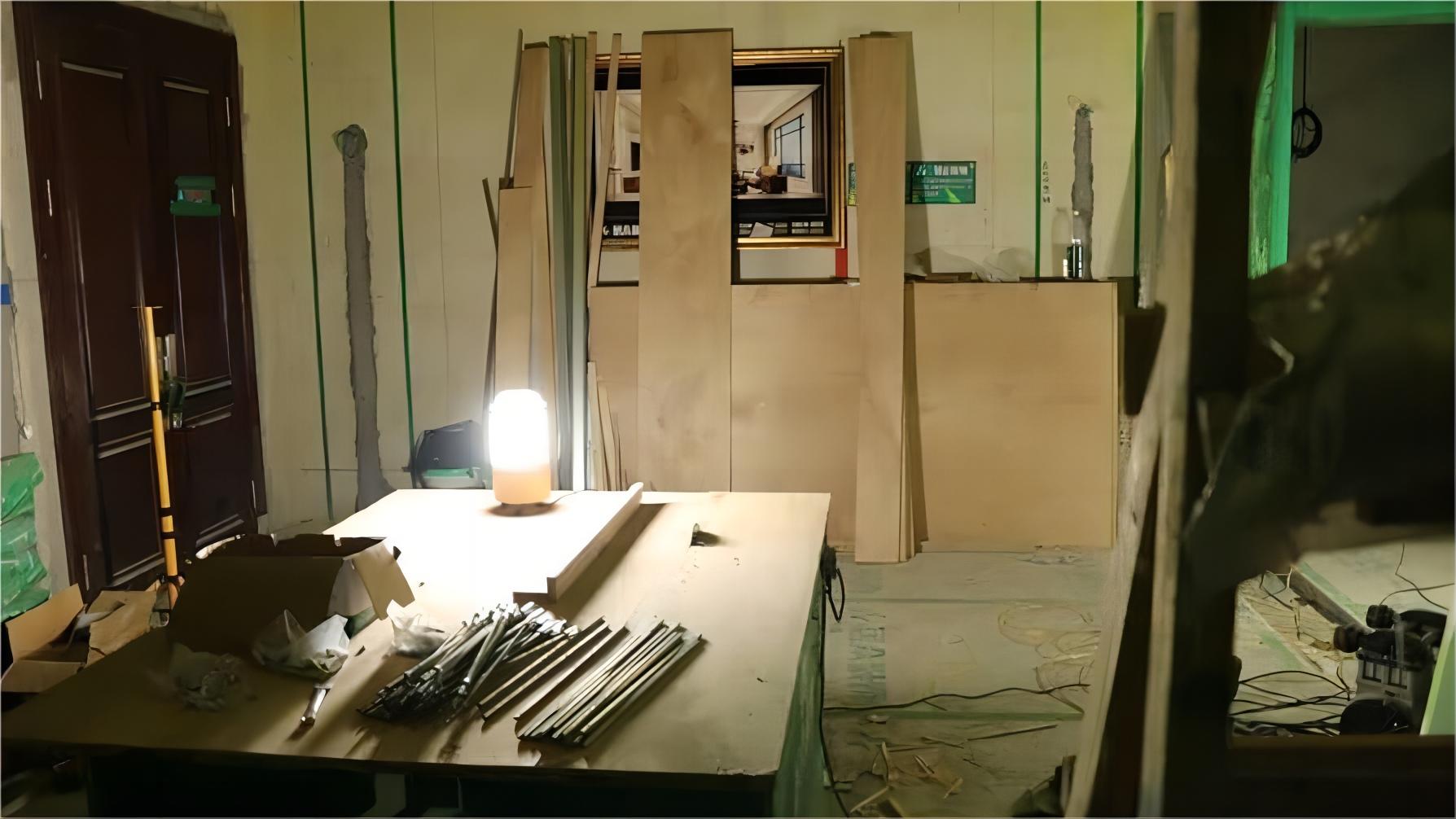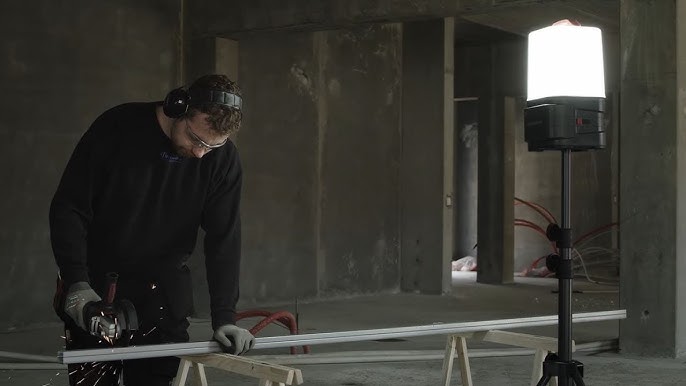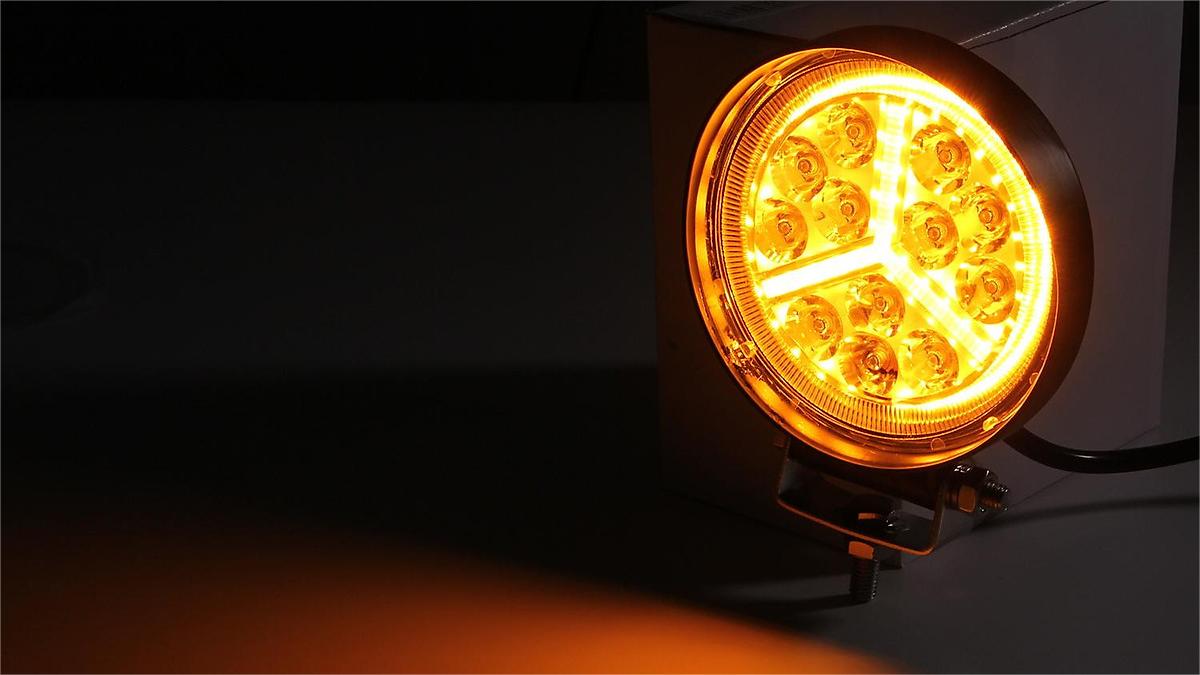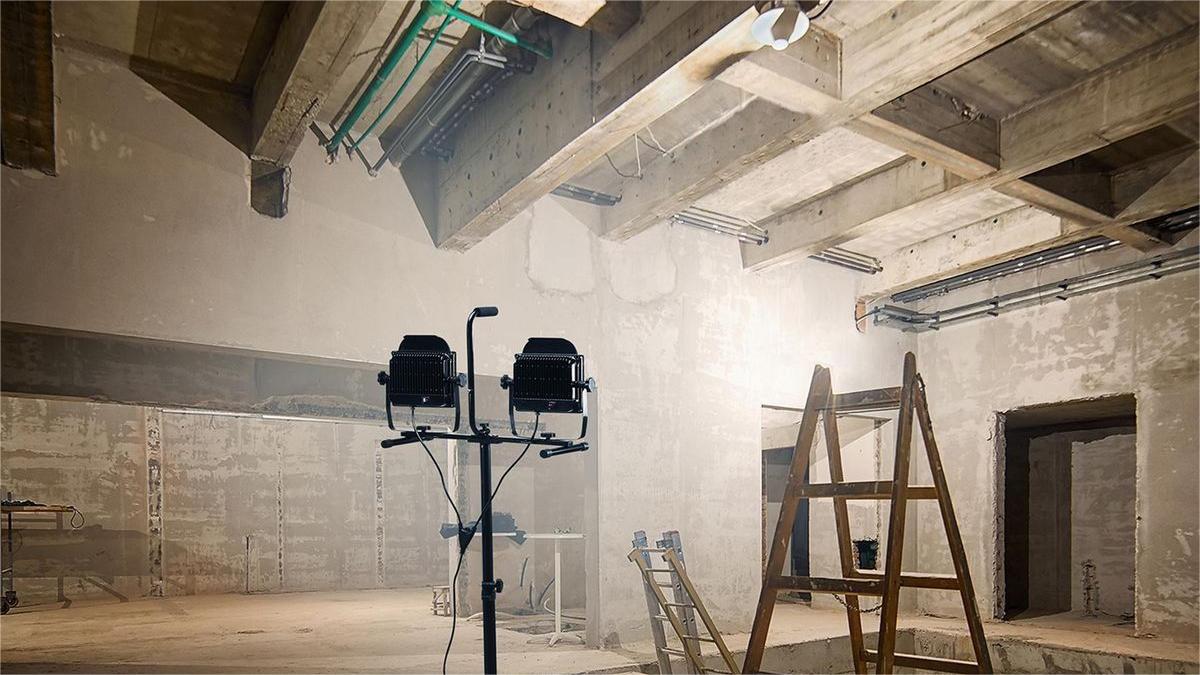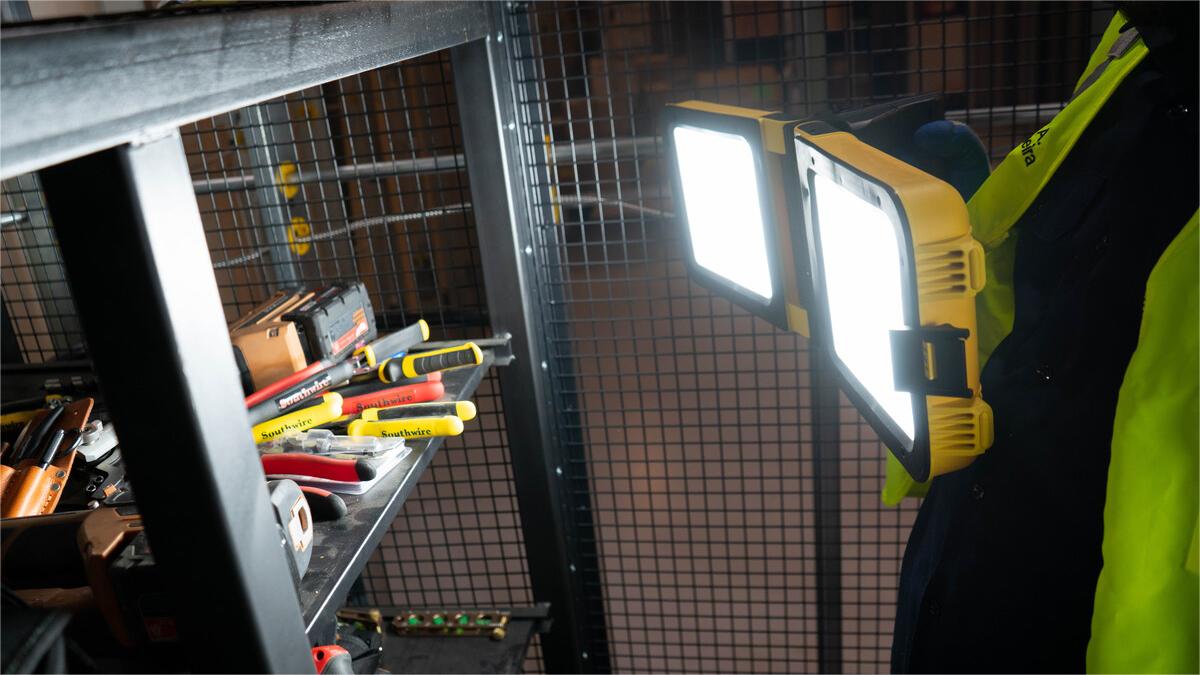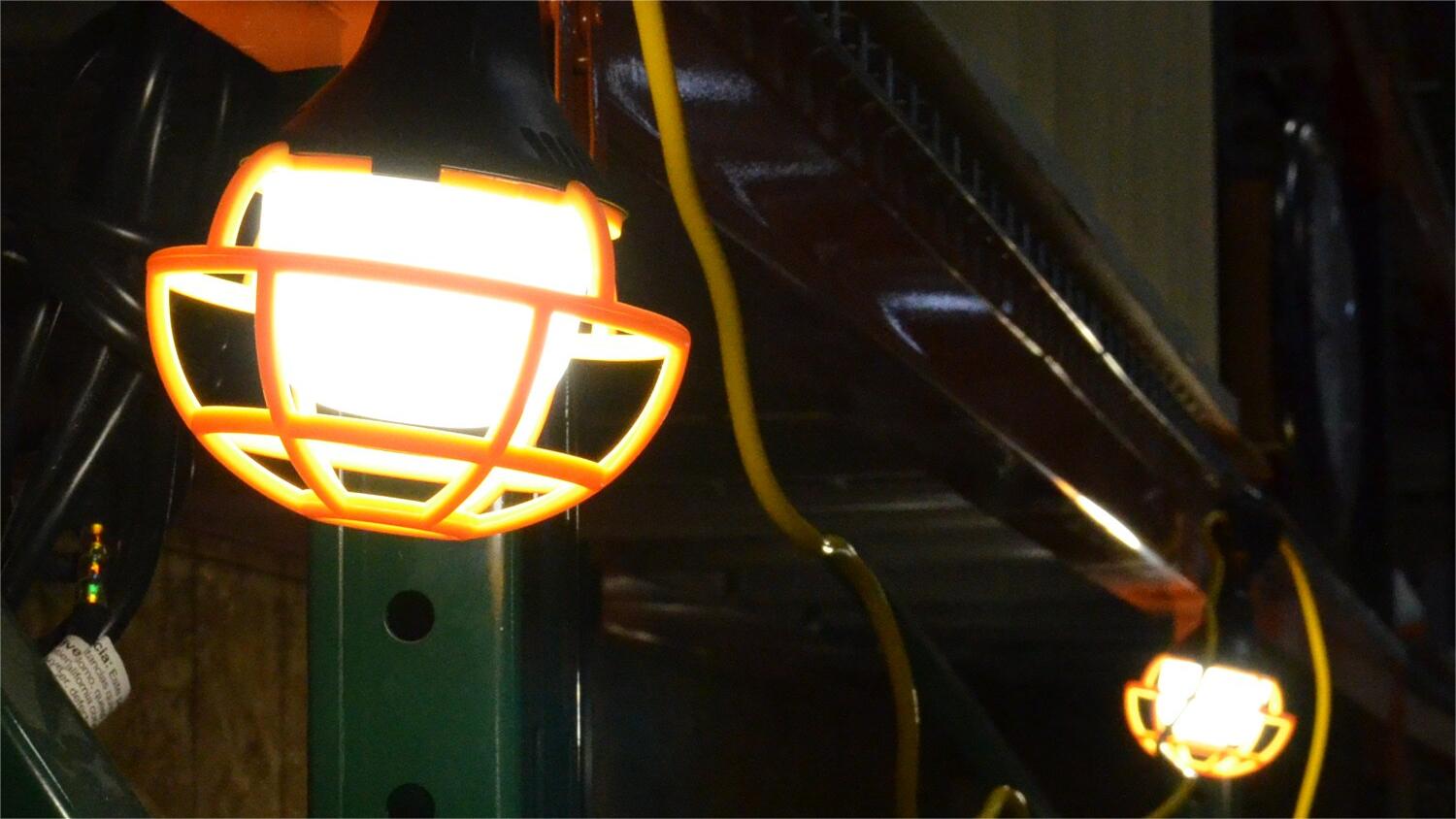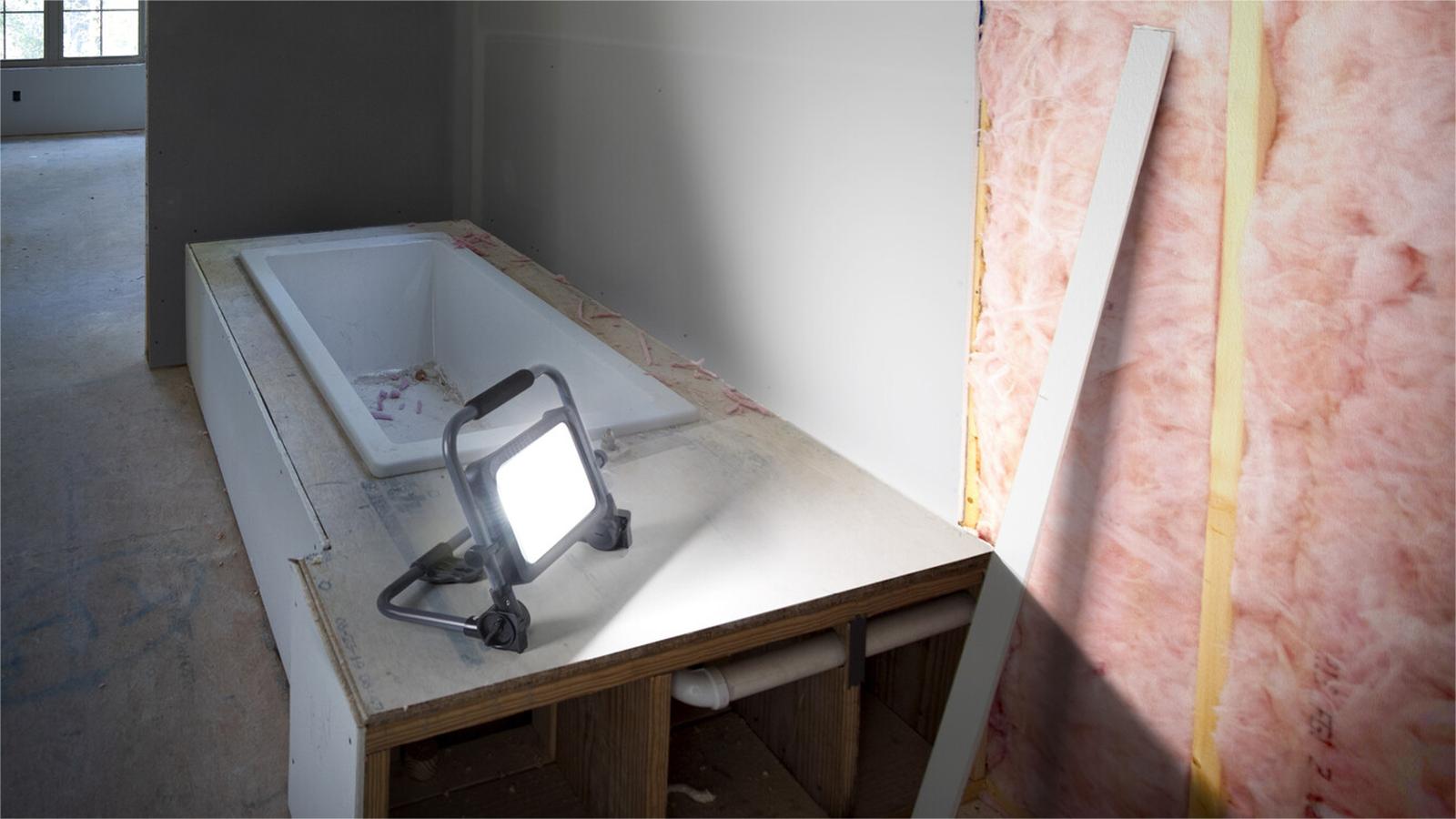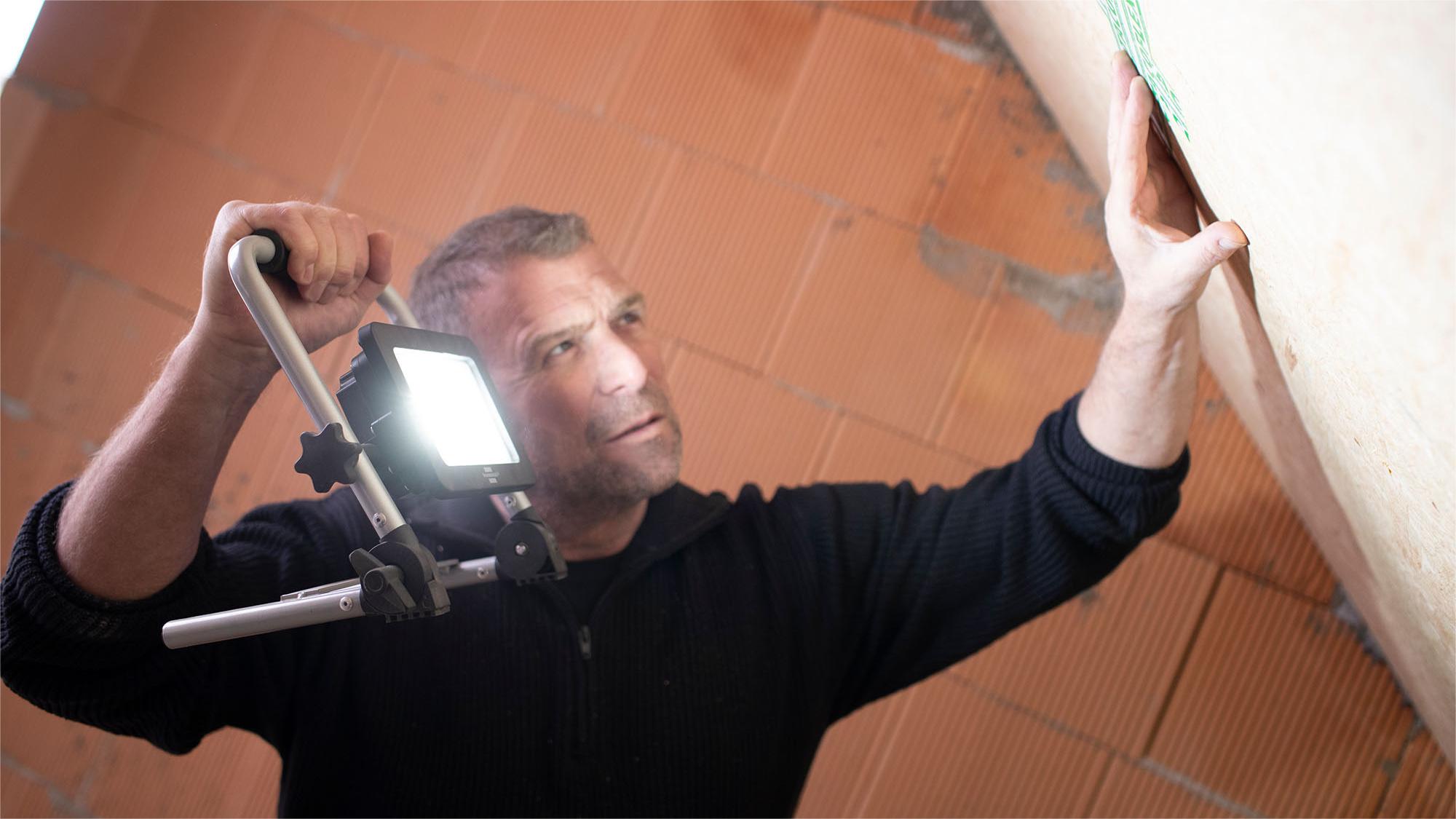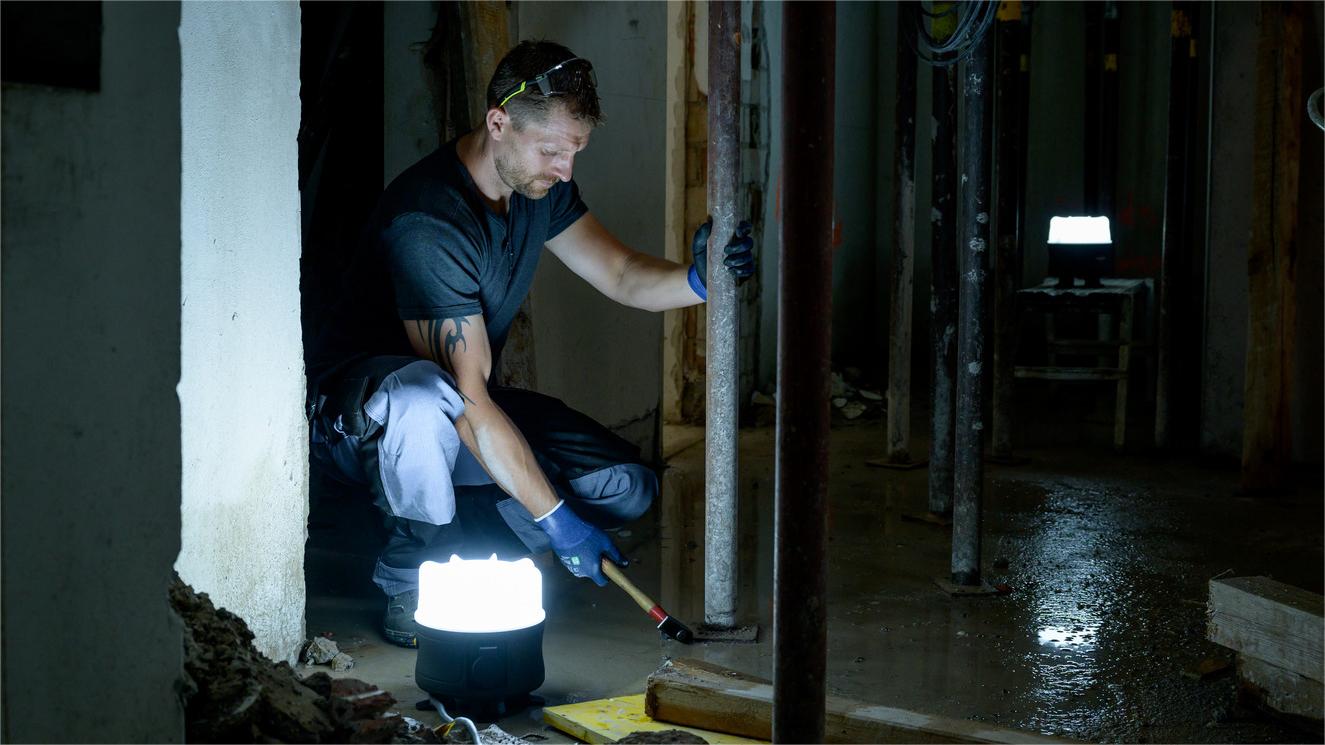Work lights are indispensable tools in various industries and DIY projects. Whether you’re a professional tradesperson or a dedicated do-it-yourself enthusiast, the right work light can make all the difference in ensuring safety, efficiency, and precision in your tasks. In this comprehensive guide, we’ll explore the world of work lights, their types, features, and how to choose the perfect one for your specific needs.
The History of Work Lights
Work lights, those reliable sources of illumination that aid in various tasks, have a long and fascinating history. From their humble beginnings to the advanced and versatile lights we have today, the evolution of work lights is a testament to human ingenuity and the relentless pursuit of better lighting solutions. Let’s embark on a journey through time to explore the history of work lights.
Ancient Beginnings
The concept of work lights dates back to ancient civilizations. Early work lights were rudimentary, often relying on open flames such as candles or oil lamps. These basic sources of light were used by artisans, craftsmen, and laborers to extend their working hours into the evening, especially during the long, dark winter nights.
Candle Lanterns
One of the earliest forms of portable work lights was the candle lantern. These lanterns, constructed from metal or glass, provided a protective enclosure for a candle, allowing for safer and more efficient illumination. Craftsmen and laborers would hang or place these lanterns near their workstations, enabling them to work after sunset.
The Advent of Oil Lamps
As civilizations advanced, so did their lighting technology. Oil lamps became the preferred source of light for workspaces. These lamps burned various oils, such as vegetable oil or whale oil, to produce a steady flame. They offered improved brightness and longer burn times compared to candles.
Gas Lights
The 19th century saw the introduction of gas-powered work lights. Gas lamps, often fueled by coal gas or later natural gas, offered a significant leap in brightness and convenience. They were widely used in factories, construction sites, and workshops. However, gas lights came with their own set of challenges, including the need for a gas supply and the risk of gas leaks.
The Electric Revolution
The late 19th and early 20th centuries marked a revolutionary period for lighting with the advent of electric lights. Thomas Edison’s development of the incandescent light bulb in 1879 was a pivotal moment. Electric work lights quickly gained popularity due to their reliability, brightness, and ease of use.
Early Electric Work Lights
Early electric work lights were often hardwired into buildings and workspaces. They featured incandescent bulbs and provided a substantial improvement in illumination. However, their fixed nature limited their portability and adaptability to different tasks.
Portable Work Lights
The 20th century witnessed the rise of portable work lights. These innovative lights featured a more compact design and were often equipped with a handle or stand. The introduction of fluorescent and halogen bulbs further improved the brightness and efficiency of work lights. Portable work lights became essential tools in construction, automotive repair, and various industrial applications.
LED Technology
The 21st century brought a significant breakthrough with the widespread adoption of Light Emitting Diode (LED) technology. LED work lights offered several advantages, including energy efficiency, long lifespan, and durability. They quickly became the go-to choice for both professionals and DIY enthusiasts.
Modern Work Lights
Today, modern work lights come in a variety of forms and sizes. They range from handheld flashlights and headlamps to mounted floodlights and task-specific lights for mechanics, painters, and other professionals. Many work lights are cordless and rechargeable, offering exceptional flexibility and portability.
Future Innovations
As technology continues to advance, the future of work lights holds the promise of even more efficient and versatile lighting solutions. From integrated smart features to enhanced durability, work lights will undoubtedly evolve to meet the ever-changing needs of a wide range of industries and individuals.
The history of work lights reflects the ongoing quest for better illumination in various work environments. From humble candle lanterns to advanced LED work lights, these tools have illuminated our path to progress and productivity, proving that the right light can truly make a world of difference.
The Role of Quality Lighting
In the realm of work and productivity, the significance of quality lighting cannot be overstated. Whether you’re at a construction site, a workshop, an office, or any other workspace, the right lighting conditions are crucial for various reasons. Let’s delve into the role of quality lighting and how it impacts safety, productivity, visibility, and overall well-being.
Safety
Safety is paramount in any work environment, and quality lighting plays a critical role in ensuring the well-being of workers.
Accident Prevention:
Well-lit areas reduce the risk of accidents. Workers can see potential hazards, obstacles, and slippery surfaces clearly, minimizing the chances of slips, trips, and falls.
Emergency Situations:
In case of an emergency, such as a fire or evacuation, adequate lighting ensures that exit routes are visible and accessible, allowing for a swift and safe evacuation.
Equipment Operation:
For tasks involving machinery and equipment, proper lighting is essential for safe operation. It enables operators to observe equipment status, read instruments, and identify potential malfunctions.
Productivity Enhancement
Quality lighting has a direct impact on work productivity. Properly lit workspaces promote efficiency and precision. Here’s how it enhances productivity:
Reduced Eye Strain:
Insufficient or poor-quality lighting can lead to eye strain, which, in turn, reduces concentration and productivity. Quality lighting reduces eye fatigue and supports extended periods of work.
Task Accuracy:
In tasks that require precision and attention to detail, good lighting is essential. It aids in reading small print, distinguishing colors accurately, and maintaining high levels of accuracy.
Timely Completion:
Improved visibility means tasks are completed more quickly and efficiently. Workers can navigate their workspace, locate tools, and perform tasks with greater ease.
Visibility and Detail Clarity
Quality lighting improves visibility, allowing workers to perceive their surroundings clearly. It plays a crucial role in:
Enhanced Detail Recognition:
Workers can spot and address small details, flaws, or imperfections in their work, leading to higher quality results.
Reduced Shadows:
Proper lighting minimizes shadows, ensuring that workers can see their workspace uniformly and without obstructions.
Color Perception:
Accurate color rendering is essential in tasks such as painting, design, and quality control. Quality lighting reproduces colors faithfully.
Reduced Eye Strain
Eye strain, often caused by prolonged exposure to inadequate or flickering lighting, can lead to discomfort, headaches, and reduced concentration. Quality lighting minimizes eye strain and promotes the well-being of workers:
Consistency:
Steady and uniform lighting reduces the strain on the eye’s focusing muscles. Workers can work comfortably without the need to constantly adjust to changing light levels.
Natural Light Simulation:
Some modern lighting solutions aim to replicate natural daylight, reducing the contrast between the screen and the surrounding area. This minimizes eye strain, particularly for individuals working on computers.
Enhanced Well-Being
Quality lighting contributes to the overall well-being of workers by creating a more comfortable and pleasant environment. It can:
Reduce Stress:
Adequate lighting can reduce stress levels and promote a more positive mood among workers.
Combat Fatigue:
Proper lighting can help combat the effects of fatigue, particularly in settings where workers’ well-being is challenged by long working hours or shift work.
Promote Alertness:
Quality lighting helps workers stay alert, focused, and engaged in their tasks.
In summary, quality lighting in the workplace is not merely a matter of aesthetics; it’s a fundamental aspect of safety, productivity, and overall well-being. Employers and workers alike should prioritize the installation of quality lighting solutions that suit the specific needs of their workspace. The right lighting doesn’t just brighten the workspace; it brightens the prospects of successful and safe work.
Types of Work Lights
Work lights come in various types, each designed to serve specific needs and situations. Whether you’re working in construction, automotive repair, painting, or any other industry, having the right type of work light can significantly enhance your efficiency and safety. Let’s explore the most common types of work lights and their respective applications.
Portable Work Lights
Portable work lights are versatile and convenient, making them ideal for a wide range of tasks. They are typically compact and easy to move, allowing you to position them where you need illumination. Some common subtypes of portable work lights include:
Handheld Flashlights:
These are small, portable lights that you can carry around or attach to your clothing. They are handy for inspecting small, tight spaces or performing tasks that require precise lighting.
Stand-Mounted Units:
These are larger, portable work lights with adjustable stands or tripods. They are suitable for illuminating larger work areas and can be positioned at various heights and angles.
Portable work lights are commonly used in construction, emergency response, outdoor events, and general maintenance tasks.
Task Lighting
Task lighting is designed to provide focused illumination for specific tasks. It’s especially useful when you need concentrated light on a particular area or object. Some common types of task lighting include:
Desk Lamps:
These are common in office settings and provide directed light for reading, writing, and computer work. They often have adjustable arms or heads for precise positioning.
Under-Cabinet Lights:
Typically found in kitchens and workshops, these lights are installed underneath cabinets to provide focused illumination on countertops and workspaces.
Clip-On Work Lights:
These are versatile lights that can be clipped onto surfaces, such as tables or shelves, to direct light to a specific area. They are frequently used in crafting, sewing, and precision tasks.
Task lighting enhances visibility for detail-oriented tasks like reading, sewing, and other activities where accuracy is essential.
Mounted Work Lights
Mounted work lights are stationary fixtures that can be permanently installed in a workspace. They offer consistent and powerful illumination, making them suitable for environments where a continuous light source is required. Common types of mounted work lights include:
Overhead Lights:
These are ceiling-mounted fixtures found in garages, workshops, and industrial settings. They provide general lighting for the entire workspace and can be positioned to cover specific areas.
Wall-Mounted Lights:
Wall-mounted lights are fixed to walls and used to direct light onto specific workstations or equipment. They are often found in commercial and industrial settings.
Mounted work lights are well-suited for areas that require constant and reliable illumination, such as factories, warehouses, and auto repair shops.
Specialized Work Lights
Specialized work lights are tailored to meet the unique needs of specific tasks or industries. They often have features or designs that make them ideal for particular applications. Some examples of specialized work lights include:
Automotive Work Lights:
These lights are designed for mechanics and automotive technicians. They often have magnetic bases, flexible necks, and strong illumination to help with inspections and repairs.
Painting Lights:
Painting lights offer accurate color rendering to help painters achieve precise color matching and application. They are common in automotive painting, art studios, and professional painting services.
Inspection Lights:
Inspection lights are used in quality control and inspection tasks. They provide clear and bright light to detect defects, imperfections, or irregularities in products.
Specialized work lights are invaluable in industries where attention to detail and specific lighting requirements are critical, such as automotive repair, painting, and quality control.
Features to Consider When Choosing a Work Light
Selecting the right work light for your specific needs involves considering various features and functionalities. The choice of features can greatly impact the light’s performance, durability, and adaptability to your work environment. Here are some key features to keep in mind when choosing a work light:
Brightness and Lumens
One of the most critical features of a work light is its brightness. Brightness is typically measured in lumens. Consider the following factors:
Lumens Rating:
Higher lumens equate to brighter light. The ideal lumen rating depends on your specific tasks. For general work areas, you may need a higher lumen output, while detailed tasks might require lower brightness.
Adjustable Brightness:
Some work lights offer adjustable brightness settings, allowing you to tailor the illumination to the task at hand.
Light Source Options
Different work lights use various light sources, each with its own set of advantages and disadvantages:
LED Lights:
LED (Light Emitting Diode) lights are highly energy-efficient, long-lasting, and generate minimal heat. They are the most popular choice for work lights due to their brightness and longevity.
Incandescent Lights:
Incandescent bulbs are less efficient and have a shorter lifespan compared to LEDs. However, they produce a warm and natural light, making them suitable for specific applications.
Halogen Lights:
Halogen bulbs provide exceptionally bright and clear light. They are often used in work lights for detailed tasks. However, they can get hot and have a shorter lifespan.
Fluorescent Lights:
Fluorescent bulbs are known for their energy efficiency and even illumination. They are commonly found in some portable work lights.
Choose a light source that aligns with your tasks and preferences, considering factors like energy efficiency, heat emission, and color rendering.
Portability and Durability
The portability and durability of a work light are essential features, particularly if you need to move the light around or work in challenging environments:
Handle or Stand:
Portable work lights often come with handles or stands for easy positioning. Some are designed with collapsible stands for convenient storage.
Sturdy Construction:
Look for work lights with sturdy construction, such as impact-resistant casing, shatterproof lenses, and weather-resistant materials for outdoor use.
IP Rating:
The Ingress Protection (IP) rating indicates the light’s resistance to dust and moisture. A higher IP rating signifies better durability, which is crucial for outdoor or rugged work environments.
Power Source
Consider how the work light is powered, as this affects its mobility and adaptability:
Corded (Electric):
Corded work lights need access to electrical outlets. While they provide consistent power, they can be less portable and might require extension cords.
Battery-Operated:
Battery-operated work lights offer excellent portability, making them suitable for remote locations. Ensure the battery has sufficient runtime for your tasks.
Rechargeable:
Rechargeable work lights combine portability with the convenience of rechargeable batteries. They are cost-effective and environmentally friendly.
Adjustable Lighting
Some work lights offer adjustable features, which enhance flexibility and adaptability to different work situations:
Pivoting Heads:
Lights with pivoting heads allow you to direct the light where it’s needed. This feature is useful for illuminating specific areas or objects.
Swivel Mounts:
Swivel mounts provide the ability to adjust the angle of the light. They are handy for positioning the light precisely.
Adjustable Brightness Levels:
Work lights with adjustable brightness levels enable you to control the intensity of the light to suit various tasks and preferences.
Consider your work environment and tasks when selecting adjustable features, as they can significantly improve the effectiveness of your work light.
Choosing the Right Work Light
Selecting the right work light is a crucial decision, as it can significantly impact your safety, productivity, and overall work experience. To make an informed choice, consider the following factors when choosing the work light that best suits your specific needs:
Task and Environment
The nature of your work and the environment in which you’ll be using the work light play a crucial role in your decision. Consider the following:
Indoor or Outdoor:
Are you working indoors, outdoors, or both? Outdoor work lights should be weather-resistant and have sufficient brightness to compete with natural light.
Environmental Conditions:
If you’re working in dusty, humid, or hazardous conditions, select a work light with appropriate durability and protection, such as a high IP rating.
Work Environment Size:
The size of your workspace can influence your choice. Larger areas may require multiple lights or brighter illumination, while smaller spaces may suffice with a single portable work light.
Type of Work
The type of work you’re performing can help determine the ideal work light. Different tasks may require specific features, such as adjustable brightness or color rendering. Consider the following:
General Illumination:
For tasks that don’t require precise lighting conditions, a standard portable work light with adjustable brightness may suffice.
Precision Work:
If you’re performing tasks that demand accurate color rendering or fine details, choose a work light with appropriate color temperature and color rendering capabilities.
Specialized Tasks:
Some professions or industries require specialized work lights. Mechanics may benefit from automotive work lights, while painters may need lights with precise color rendering.
Location
Where you plan to position the work light is essential for efficient illumination. Consider the following location-related factors:
Positioning:
Think about how you plan to position the work light. Will it be mounted on a tripod, hung from a hook, attached to a magnetic base, or placed on the ground?
Mounting Options:
Some work lights offer various mounting options, such as brackets or swivel mounts. These options can enhance flexibility and precision in directing the light.
Accessibility to Power:
Determine whether you have easy access to power sources. Corded work lights require nearby electrical outlets, while battery-operated or rechargeable lights provide greater flexibility for remote locations.
Power Source Availability
The availability of power sources in your work environment will influence your choice of work light:
Corded (Electric):
Corded work lights provide consistent and uninterrupted power. However, they may limit your mobility and require extension cords for greater reach.
Battery-Operated:
Battery-operated work lights offer excellent portability and can be used in remote locations. Ensure the battery provides sufficient runtime for your tasks.
Rechargeable:
Rechargeable work lights combine portability with cost-effectiveness. They are environmentally friendly and can save you money on disposable batteries.
Safety Considerations When Using Work Lights
Work lights are indispensable tools in various industries and work environments, but ensuring their safe use is paramount. Neglecting safety precautions can lead to accidents, damage to equipment, and potential harm to individuals. To work safely with work lights, it’s essential to consider the following safety considerations:
Heat Emission
Some types of work lights, especially those with halogen or incandescent bulbs, can generate significant heat. To prevent accidents or burns:
- Keep work lights away from flammable materials, such as paper or fabric.
- Avoid direct contact with the light’s bulb or hot surfaces. Always use handles or grips, if provided.
- Ensure the work light is placed on a stable surface, so it doesn’t tip over.
Water Resistance
If you’re using work lights in wet or outdoor environments, it’s crucial to select lights with the appropriate level of water resistance. This is denoted by the Ingress Protection (IP) rating. A higher IP rating indicates better protection against moisture and dust.
- Confirm that the work light is suitable for your specific environment, whether it’s a construction site, garage, or outdoor event.
- Keep cords and electrical components away from water sources and wet areas to prevent electrical hazards.
Electrical Safety
Electrical safety is paramount when working with corded work lights. To minimize the risk of electrical accidents:
- Inspect power cords for damage, such as fraying or exposed wires. Replace damaged cords immediately.
- Ensure that the work light is plugged into a properly grounded electrical outlet.
- Use Ground Fault Circuit Interrupters (GFCIs) when working in potentially wet environments.
Proper Placement of Lights
The correct placement of work lights is essential to ensure they provide adequate illumination without creating shadows or obstructions. Consider the following:
- Position work lights so they don’t create glare, which can affect visibility and cause eye strain.
- Avoid placing lights too close to reflective surfaces, as this can intensify the light and potentially cause discomfort.
- Illuminate the entire work area evenly to prevent dark spots or areas with insufficient light.
Secure Mounting
If you’re using mounted work lights, it’s crucial to ensure that they are securely attached and won’t fall or shift unexpectedly:
- Check the mounting mechanism for stability and integrity. Ensure it can support the weight of the work light.
- Follow the manufacturer’s guidelines for mounting and positioning to minimize the risk of accidents.
Overhead Lighting
When working with overhead lights, such as ceiling-mounted fixtures, extra precautions are necessary:
- Regularly inspect overhead lights for signs of wear or damage. Replace bulbs or fixtures as needed.
- Keep the area beneath overhead lights clear of obstacles to prevent objects from falling onto the workspace.
Switching Off When Not in Use
To save energy and reduce the risk of accidents:
- Turn off work lights when they are not in use or when you leave the workspace.
- Ensure that the work light’s power source, whether it’s an electrical outlet or a battery, is disconnected or switched off.
Use Appropriate Personal Protective Equipment (PPE)
Depending on your work environment, the nature of the tasks, and the lighting conditions, it may be necessary to use PPE, such as safety glasses, to protect your eyes or reflective clothing for visibility in low-light conditions.
Regular Maintenance and Inspection
Perform routine maintenance and inspections on your work lights to ensure they are in good working condition. Check for loose wires, damaged components, or signs of wear and tear. Replace or repair any faulty parts promptly.
By prioritizing safety considerations when working with work lights, you can create a well-lit and secure environment that promotes productivity while minimizing risks. Following best practices and adhering to safety guidelines ensures that work lights are valuable tools that enhance your work experience without compromising safety.
Maintenance and Care of Work Lights
Proper maintenance and care of your work lights are essential to ensure their longevity, reliability, and safety. Regular maintenance practices not only extend the life of your work lights but also help to prevent accidents and unexpected failures. Here are some key maintenance and care guidelines to follow:
Inspect Regularly
Perform routine inspections of your work lights to identify any issues or signs of wear. This should include the following checks:
Cords and Wiring:
Examine the power cord and wiring for any fraying, cuts, or exposed wires. Replace damaged cords immediately to avoid electrical hazards.
Bulbs or Light Sources:
Check the condition of the bulbs or light sources. If you notice any flickering or reduced brightness, replace the bulbs promptly to maintain optimal illumination.
Mounting and Fixtures:
If your work light is mounted or attached to a stand, inspect the mounting mechanism for stability and integrity. Ensure that it’s securely attached and can support the weight of the light.
Cleanliness:
Dust and debris can accumulate on the light’s surface or lenses, reducing its brightness. Regularly clean the light to maintain optimal illumination.
Cleaning
Maintaining a clean work light is essential for both performance and safety. Here’s how to clean your work light properly:
Unplug or Power Off:
Always disconnect the work light from its power source before cleaning to prevent electric shocks.
Dust and Debris:
Use a soft, dry cloth or a can of compressed air to remove dust and debris from the light’s surface, lenses, and vents.
Cleaning Solutions:
For stubborn dirt or grime, you can use a mild cleaning solution (water and a small amount of detergent) with a damp cloth. Ensure that the cloth is not dripping wet, as excess moisture can damage electrical components.
Lenses:
For work lights with protective lenses, clean them with a lens cleaning solution or a mixture of water and isopropyl alcohol. Avoid using abrasive materials that could scratch the lens.
Ventilation:
Ensure that the light’s ventilation areas are free from dust and obstructions. Clean them with a brush or compressed air.
Storage
Proper storage of your work lights when not in use helps maintain their condition and prolong their lifespan:
Dry Environment:
Store work lights in a dry, temperature-controlled environment. Moisture and extreme temperatures can damage the light’s components.
Secure Placement:
Store the light in a secure location to prevent it from falling or becoming damaged. Ensure it is placed on a stable surface.
Coiling Cords:
When storing corded work lights, avoid coiling the cord too tightly, as this can cause damage or kinks. Use a cord reel or hanger for a more organized approach.
Repairs and Replacements
If you notice any significant issues, it’s important to address them promptly:
Electrical Repairs:
For electrical issues or damaged wiring, consult a qualified electrician or technician for repairs. Never attempt to repair electrical components yourself, as it can be dangerous.
Component Replacement:
If parts such as bulbs, switches, or handles need replacement, consult the manufacturer’s guidelines for compatible replacement parts. Ensure that the work light is disconnected from power before making any replacements.
Manufacturer Guidelines:
Always refer to the manufacturer’s user manual for specific maintenance and care instructions. Following their recommendations can help you avoid common issues and ensure the light’s longevity.
By following these maintenance and care guidelines, you can ensure that your work lights remain in excellent condition and continue to provide reliable and safe illumination for your tasks. Properly maintained work lights not only enhance productivity but also contribute to a safer and more efficient work environment.
Conclusion
Work lights are invaluable tools in various industries, providing the illumination necessary for a wide range of tasks. From construction sites to workshops, these lights enhance safety, productivity, and the overall work experience. To recap, here are the key takeaways when it comes to work lights:
Safety First:
Prioritize safety by being aware of heat emission, water resistance, and proper electrical precautions. Always maintain a safe distance from hot surfaces, ensure water-resistant lighting in wet environments, and use GFCIs where needed.
Select the Right Light:
Choose a work light that suits your specific needs and environment. Consider the type of work you’re performing, the size of your workspace, and the location where the light will be used.
Consider Power Sources:
Decide between corded, battery-operated, or rechargeable work lights, depending on your accessibility to power sources and the portability required for your tasks.
Adjustable Features:
The ability to pivot, swivel, and adjust brightness can greatly enhance the adaptability of your work light to different tasks and environments.
Maintenance Matters:
Regular inspections, cleaning, and proper storage are essential for the longevity and safety of your work lights. Ensure cords and wiring are in good condition, and replace bulbs as needed.
Prompt Repairs:
Address significant issues promptly, but always consult professionals for electrical repairs. Follow manufacturer guidelines for component replacements.
Properly maintained work lights not only contribute to your work’s efficiency but also enhance the safety and well-being of everyone in the work environment. By keeping these considerations in mind, you can make the most of your work lights and ensure they serve you well in your daily tasks.
Post time: Nov-10-2023


